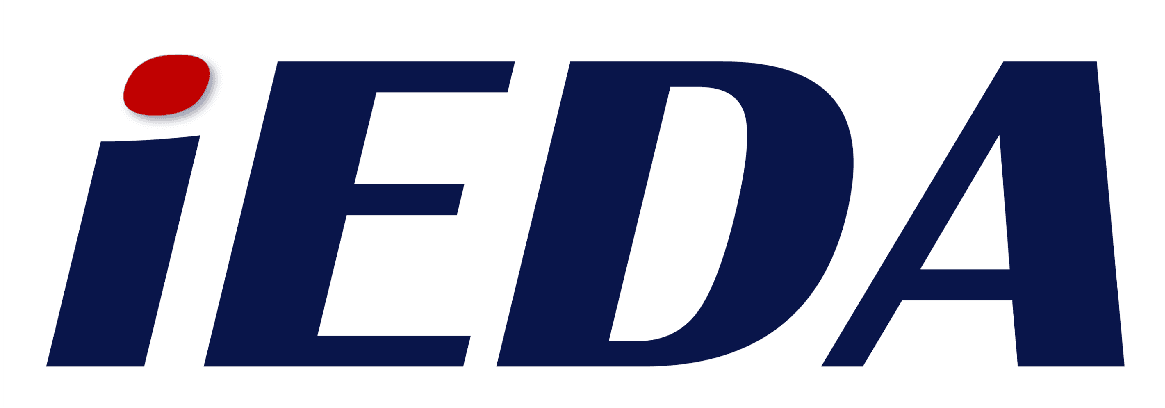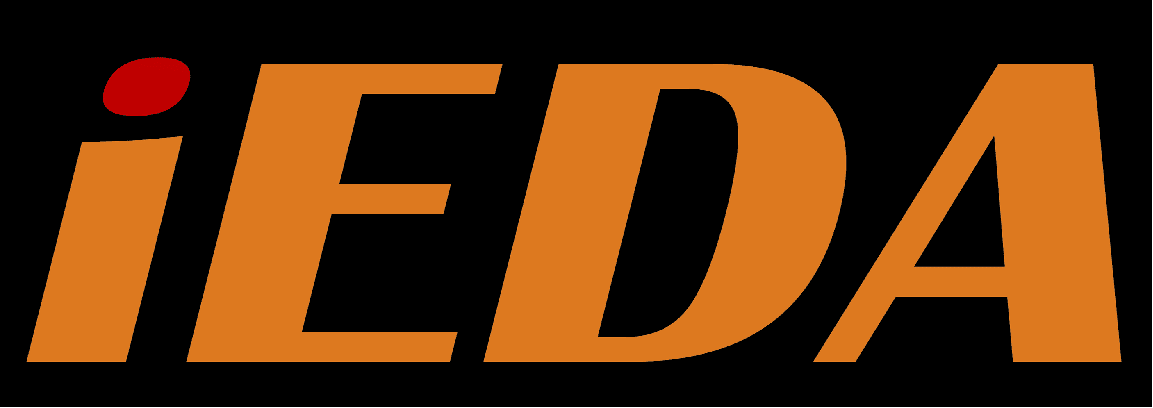AIEDA
大约 5 分钟
AI for Logic Synthesis
AI for Logic Synthesis Dataset and Library
- The mnist database of handwritten digit images for machine learning research
- Learning multiple layers of features from tiny images
- Circuitnet: An open-source dataset for machine learning in vlsi cad applications with improved domain-specific evaluation metric and learning strategies
- Circuitnet 2.0: An advanced dataset for promoting machine learning innovations in realistic chip design environment
- OpenLS-DGF: An adaptive open-source dataset generation framework for machine learning tasks in logic synthesis
- Building openlane: a 130nm openroad-based tapeout-proven flow
- Open circuit design
- Unveiling the ISCAS-85 benchmarks: A case study in reverse engineering
- The epfl combinational benchmark suite
- Exact benchmark circuits for logic synthesis
- Opencores
- Rt-level itc’99 benchmarks and first atpg results
AI for Circuit Analysis
- Graph representation learning: a survey
- Drills: Deep reinforcement learning for logic synthesis
- Openabc-d: A large-scale dataset for machine learning guided integrated circuit synthesis
- Area-driven fpga logic synthesis using reinforcement learning
- Semi-supervised classification with graph convolutional networks
- Inductive representation learning on large graphs
- Neural message passing for quantum chemistry
- Deepgate2: Functionality-aware circuit representation learning
- Gamora: Graph learning based symbolic reasoning for large-scale boolean networks
- Directed acyclic graph neural networks
- Graph attention networks
- D-vae: A variational autoencoder for directed acyclic graphs
- Functionality matters in netlist representation learning
- Deepgate: learning neural representations of logic gates
- Deepseq: Deep sequential circuit learning
- Deepseq2: Enhanced sequential circuit learning with disentangled representations
- Deepgate3: Towards scalable circuit representation learning
- Converts: Contrastively learning structurally invariant netlist representations
- Deep learning-based circuit recognition using sparse mapping and level-dependent decaying sum circuit representations
- Circuit representation learning with masked gate modeling and verilog-AIG alignment
- High-speed adder design space exploration via graph neural processes
- Deepcell: Multiview representation learning for post-mapping netlists
- Fgnn2: A powerful pretraining framework for learning the logic functionality of circuits
- Deepsat: An eda-driven learning framework for sat
- Versatile multi-stage graph neural network for circuit representation
- Calculating signal controllability using neural networks: Improvements to testability analysis and test point insertion
- Test point insertion with deep reinforcement learning
- Graph learning-based arithmetic block identification
- Graph neural network based netlist operator detection under circuit rewriting
- Invited paper: Verilog-to-pyg - a framework for graph learning and augmentation on rtl designs
- The vtr project: architecture and cad for fpgas from verilog to routing
- Deepgate4: Efficient and effective representation learning for circuit design at scale
- Less is more: Hop-wise graph attention for scalable and generalizable learning on circuits
- Polargate: Breaking the functionality representation bottleneck of and-inverter graph neural network
AI for Logic Optimization
- FRAIGs: A unifying representation for logic synthesis and verification
- Delay optimization using SOP balancing
- Scalable logic synthesis using a simple circuit structure
- Deep learning for logic optimization algorithms
- How powerful are graph neural networks?
- Lostin: Logic optimization via spatio-temporal information with hybrid graph models
- The prediction of the quality of results in logic synthesis using transformer and graph neural networks
- Multimodal deep learning for biomedical data fusion: a review
- Mtlso: A multi-task learning approach for logic synthesis optimization
- Logic synthesis optimization with predictive self-supervision via causal transformers
- Developing synthesis flows without human knowledge
- Decision making in synthesis cross technologies using lstms and transfer learning
- GRANNITE: Graph neural network inference for transferable power estimation
- Bulls-eye: Active few-shot learning guided logic synthesis
- Lstp: A logic synthesis timing predictor
- Congestionnet: Routing congestion prediction using deep graph neural networks
- Ceconp: Exploring node centrality for early routing congestion prediction
- Lsoracle: a logic synthesis framework driven by artificial intelligence: Invited paper
- The map method for synthesis of combinational logic circuits
- HeLO: A heterogeneous logic optimization framework by hierarchical clustering and graph learning
- Boils: Bayesian optimisation for logic synthesis
- Batch sequential black-box optimization with embedding alignment cells for logic synthesis
- Alphasyn: Logic synthesis optimization with efficient monte carlo tree search
- Retrieval-guided reinforcement learning for boolean circuit minimization
- Automatic multi-parameter tuning for logic synthesis with reinforcement learning
- Exploring logic optimizations with reinforcement learning and graph convolutional network
- Logic synthesis optimization sequence tuning using rl-based lstm and graph isomorphism network
- Easyso: Exploration-enhanced reinforcement learning for logic synthesis sequence optimization and a comprehensive rl environment
- Flowtune: End-to-end automatic logic optimization exploration via domain-specific multiarmed bandit
- An efficient reinforcement learning based framework for exploring logic synthesis
- AISyn: AI-driven reinforcement learning-based logic synthesis framework
- Adaptive reconvergence-driven aig rewriting via strategy learning
- A circuit domain generalization framework for efficient logic synthesis in chip design
- Slap: A supervised learning approach for priority cuts technology mapping
- Rl-mul: Multiplier design optimization with deep reinforcement learning
- Prefixrl: Optimization of parallel prefix circuits using deep reinforcement learning
- Circuitvae: Efficient and scalable latent circuit optimization
AI for Technology Mapping
- A new retiming-based technology mapping algorithm for LUT-based FPGAs
- A survey of boolean matching techniques for library binding
- Flowmap: an optimal technology mapping algorithm for delay optimization in lookup-table based fpga designs
- Simultaneous depth and area minimization in lut-based fpga mapping
- Combinational and sequential mapping with priority cuts
- Slap: A supervised learning approach for priority cuts technology mapping
- Attention-based mechanism for technology mapping optimization
- Machine-learning based delay prediction for fpga technology mapping
- Lightgbm: A highly efficient gradient boosting decision tree
- Aimap: Learning to improve technology mapping for asics via delay prediction
AI for Exact Synthesis
- Multiple-valued minimization for PLA optimization
- Practical sat-a tutorial on applied satisfiability solving
- Logic synthesis meets machine learning: Trading exactness for generalization
- International workshop on logic and synthesis contest
- A review of machine learning in logic synthesis
- On PAC learning algorithms for rich boolean function classes
- Statistical queries and statistical algorithms: Foundations and applications
- Towards next-generation logic synthesis: A scalable neural circuit generation framework
- DARTS: Differentiable architecture search
- Deep differentiable logic gate networks
- Categorical reparameterization with gumbel-softmax
- Seadag: Semi-autoregressive diffusion for conditional directed acyclic graph generation
- Neural combinatorial logic circuit synthesis from input-output examples
- Optimizing computer systems with more generalized ai tools
- Architect of the bits world: Masked autoregressive modeling for circuit generation guided by truth table
- Shortcircuit: Alphazero-driven generative circuit design
- Circuit transformer: A transformer that preserves logical equivalence
- Logic synthesis with generative deep neural networks
- Boolformer: Symbolic regression of logic functions with transformers
- Can symbolic regression of boolean functions boost logic synthesis?
- Sampling-based approximate logic synthesis: An explainable machine learning approach
- LayerDAG: A layerwise autoregressive diffusion model for directed acyclic graph generation
- Beswac: Boosting exact synthesis via wiser sat solver call
AI for Physical Design
AI for Physical Design Dataset and Library
AI for Placement
AI for Routing
AI for Timing and Power
AI for Routability and DRC
AI for Verification
- Machine learning methods in solving the boolean satisfiability problem
- Machine learning for automated theorem proving: Learning to solve sat and qsat
- Learning a sat solver from single-bit supervision
- Predicting propositional satisfiability via end-to-end learning
- Predicting propositional satisfiability based on graph attention networks
- Satformer: Transformer-based unsat core learning
- Learning to solve circuit-sat: An unsupervised differentiable approach
- Sat-gatv2: A dynamic attention-based graph neural network for solving boolean satisfiability problem
- Goal-aware neural sat solver
- Guiding high-performance sat solvers with unsat-core predictions
- Can q-learning with graph networks learn a generalizable branching heuristic for a sat solver?
- Learning local search heuristics for boolean satisfiability
- Neuroback: Improving cdcl sat solving using graph neural networks
- Learning cubing heuristics for sat from drat proofs
- Graph neural reasoning may fail in certifying boolean unsatisfiability
- Nlocalsat: Boosting local search with solution prediction
AI for Test Synthesis
- On using machine learning for logic bist
- A survey and recent advances: Machine intelligence in electronic testing
- Test point insertion using artificial neural networks
- Applying neural networks to delay fault testing: Test point insertion and random circuit training
- High performance graph convolutional networks with applications in testability analysis
- Applying artificial neural networks to logic built-in self-test: Improving test point insertion
- Test point selection using deep graph convolutional networks and advantage actor critic (a2c) reinforcement learning
- Toward zero backtracks in test pattern search algorithms with machine learning
- Machine intelligence for efficient test pattern generation
- Training neural network for machine intelligence in automatic test pattern generator
- A graph autoencoder approach for fault prediction in test pattern generation
AI for Security
- Sail: Machine learning guided structural analysis attack on hardware obfuscation
- An oracle-less machine-learning attack against lookup-table-based logic locking
- Untangle: Unlocking routing and logic obfuscation using graph neural networks-based link prediction
- Galu: A genetic algorithm framework for logic unlocking
- Omla: An oracle-less machine learning-based attack on logic locking
- Muxlink: Circumventing learning-resilient mux-locking using graph neural network-based link prediction
- INSIGHT: Attacking Industry-Adopted learning resilient logic locking techniques using explainable graph neural network
- Gnnreveal: A novel graph neural network-based attack method for ic logic gate de-camouflaging
- Gnn-re: Graph neural networks for reverse engineering of gate-level netlists
- Flip-lock: A flip-flop-based logic locking technique for thwarting ml-based and algorithmic structural attacks
- Gnn4ip: Graph neural network for hardware intellectual property piracy detection

